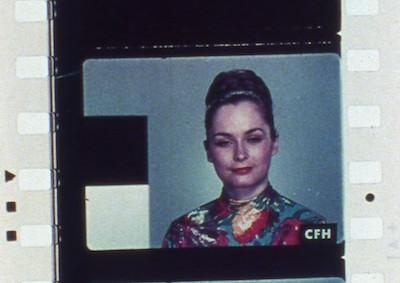The “China Girl,” sometimes called a “China Doll” or “girl head,” is a type of reference image used in commercial film laboratories since the late 1920s and continuing in limited use today. The China Girl has appeared in more films than any actress, though, outside of the film laboratory, she is rarely seen. Behind the scenes, however, she is essential to setting the appearance of a film, determining exposure, image density and color balance. While the China Girl is a crucial part of the film production process, her essential role in film history has been most often overlooked. This program gathers a selection of experimental films that consider the China Girl from various perspectives, including that of celluloid materiality, the behind-the-scenes workings of the film industry, and the often marginal role of women in film history. The screening will be preceded by a talk by film scholar Genevieve Yue to discuss her book, Girl Head: Feminism and Film Materiality (Fordham University Press, 2020) and present a program of films that exemplifies her research. All short film notes below were taken from Yue’s new book with the exception of Ein Bild, which was taken from the filmmaker’s website and is presented below in his own words.
Genevieve Yue will sign copies of her book, which will be available for purchase, in the lobby starting at 6:30 p.m.
China Girls
U.S., 2006
Situates China Girls in what the filmmaker describes as their “natural habitat of countdowns and end-tones,” sustaining, in part, the viewer’s mode of incidental looking while providing some longer segments of China Girl footage as it was originally shot.
16mm, color, 3 min. Director: Michelle Silva.
Standard Gauge
U.S., 1984
Morgan Fisher’s film is organized as a kind of show-and-tell of various film strips he had collected working in stock footage libraries and as an editor on low-budget features. Winding strips of 35mm film over a lightbox, Fisher pauses on several examples of China Girls to comment on them.
16mm, color, 35 min. Director: Morgan Fisher.
Ein Bild
Germany, 1983
“Four days spent in a studio working on a centerfold photo for Playboy magazine provided the subject matter for my film. The magazine itself deals with culture, cars, a certain lifestyle. Maybe all those trappings are only there to cover up the naked woman. Maybe it's like with a paper-doll.”
Digital, color, in German with English subtitles. 25 min. Director: Harun Farocki.
Releasing Human Energies
U.S., 2012
For a little over five minutes, the woman in the China Girl image sits in real time, visibly uncomfortable and blinking. The woman’s discomfort is underscored by the narration of Morgan Fisher, who once again speaks over the image of the China Girl.
16mm, color, 6 min. Director: Mark Toscano.
Total film runtime: 69 minutes.






 Mobile Navigation
Mobile Navigation

